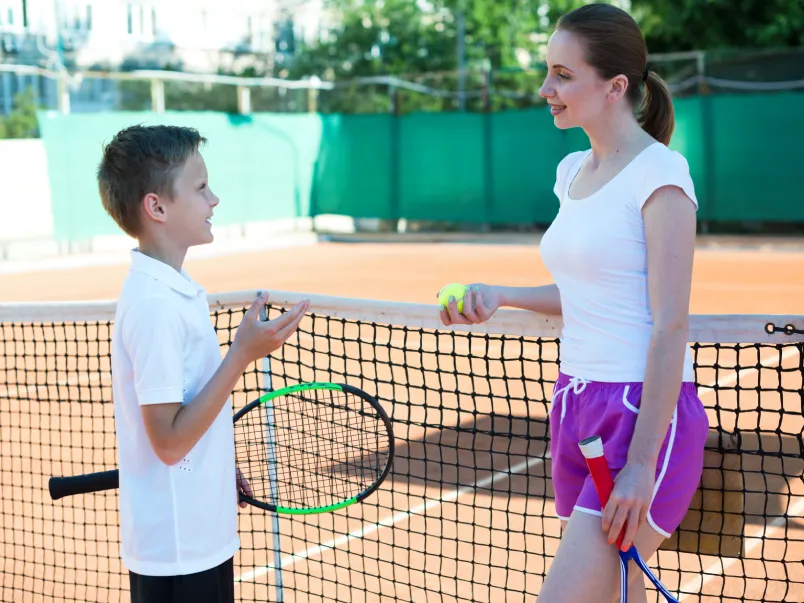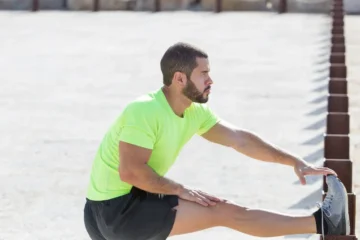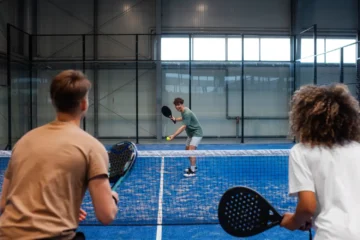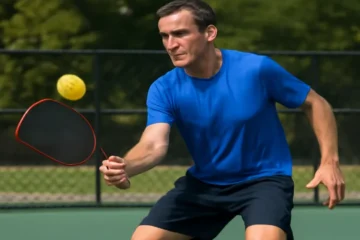Imagine this: a child racing down the soccer field, feeling the rush of excitement as they go for the ball. In an instant, they lose their balance and tumble to the ground, but instead of a serious injury, they simply pick themselves up and keep playing. What made the difference? The right protective gear. Whether you’re a seasoned athlete or just someone enjoying a weekend hobby, proper protective equipment can transform a potential injury into a minor inconvenience.
In this comprehensive guide, we’ll explore why protective gear is non-negotiable for safety, and how it not only protects you from injuries but also boosts your confidence and improves performance. Whether you’re new to sports or a seasoned pro, wearing the right gear is essential for your safety and long-term enjoyment.
I. The “Why”: The Non-Negotiable Importance of Protective Gear
When we think of sports, we often focus on the thrill, the competition, and the rewards of pushing ourselves to perform at our best. But what we often overlook is the crucial role that protective gear plays in ensuring that we can continue to play, season after season, without serious injury. Here’s why it’s a necessity:
Preventing Catastrophic Injuries
One of the primary functions of protective gear is to prevent serious, life-changing injuries. Helmets, for instance, are designed to protect the brain from traumatic injury like concussions, while wrist guards can save you from broken bones during a fall. Pads shield you from abrasions, bruises, and cuts that could otherwise sideline you for weeks. Without proper protection, even a small misstep could turn into a disaster.
Reducing the Severity of Common Injuries
While protective gear doesn’t eliminate the risk of injury, it significantly reduces its severity. Falls, bumps, and scrapes are a part of any sport, but the right gear can minimize the damage. From minor abrasions to sprains, protective gear helps keep your injuries manageable so you can get back to the game faster.
Building Confidence for Better Play
Wearing the right protective gear allows athletes to play with confidence. When players feel safe, they are more likely to push themselves and take calculated risks, leading to improved performance and skill development. The mental comfort that comes with knowing you’re protected enhances your ability to focus on the game, not on avoiding injuries.
Setting a Positive Example
For parents, coaches, and mentors, ensuring that children or beginners wear the proper gear sets a positive example. It teaches lifelong habits of safety and awareness, helping individuals evaluate risks and make informed decisions in sports and beyond. By making gear a non-negotiable part of the playing experience, you foster a culture of responsibility and smart play.
II. The Head-to-Toe Guide: Essential Gear by Body Part
Protective gear is designed to safeguard the most vulnerable parts of your body, from your head to your feet. Let’s break down the essential gear that should be worn for various activities.
A. The Most Critical: Helmets
Why it’s essential: Helmets are arguably the most important piece of protective gear. They protect the brain from traumatic injuries, including concussions and skull fractures. For certain sports, they are mandatory for safety.
Activity-Specific Types:
- Bicycle/Scooter/Skateboarding Helmets: Always look for CPSC or ASTM certification for cycling and skateboarding helmets, which ensure they meet safety standards.
- Sports Helmets: Football, baseball, hockey, and lacrosse each require specific helmets designed for different types of impacts. For example, football helmets are built to withstand hard tackles, while baseball helmets are designed for protection from fast-moving pitches.
Key Feature: Proper fit is crucial. A helmet should sit snugly on the head, not too tight or too loose, and it should sit level, not tilted forward or backward.
B. Seeing Clearly: Eye Protection
Why it’s essential: Eye protection helps prevent injuries from flying debris, stray balls, or accidental collisions. It can prevent serious eye damage, which is critical for both short-term safety and long-term vision health.
Types: Polycarbonate lenses are the go-to choice for racquet sports, basketball, hockey, and biking. This material is known for being shatterproof and highly resistant to impact.
Key Feature: Make sure that the lenses are not only shatterproof but also offer UV protection, especially in outdoor sports.
C. Protecting the Smile: Mouthguards
Why it’s essential: Mouthguards are vital for preventing broken teeth, jaw injuries, and reducing the risk of concussions. They cushion impacts to the face, especially during high-contact sports.
Types:
- Stock Mouthguards: Pre-formed and ready to wear but can be uncomfortable.
- Boil-and-Bite Mouthguards: Mold to the shape of your teeth after boiling them in water.
- Custom-Fitted Mouthguards: These are created by a dentist for the best fit and protection.
D. Joint Support: Pads for Knees, Elbows, and Wrists
Why they’re essential: These joints are highly vulnerable to impacts and abrasions. For activities like skateboarding, rollerblading, and hockey, knee, elbow, and wrist pads are crucial to avoid injuries during falls or tackles.
Common Activities: Skateboarding, rollerblading, volleyball, and hockey are examples of sports where these pads are essential for reducing injury risks.
Key Feature: Look for pads with hard caps that provide impact protection, but with flexible and breathable materials underneath for comfort.
E. Strong Foundation: Proper Footwear
Why it’s essential: Footwear provides crucial ankle support, stability, and traction specific to each sport’s demands. Proper shoes prevent ankle sprains, improve performance, and help with endurance.
Examples:
- Cleats for Soccer/Football: Offer traction on grass or turf.
- High-Tops for Basketball: Provide ankle support and cushioning during jumps and landings.
- Supportive Sneakers for Running: Cushion the feet during long-distance runs.
III. Gear by Activity: A Quick-Reference Checklist
Every activity has specific gear requirements. Here’s a breakdown of what you need for each type of sport.
A. Wheeled Sports (Biking, Skateboarding, Rollerblading)
Must-Haves: Helmet, knee pads, elbow pads, wrist guards.
Recommended: Gloves, mouthguard.
B. Team Sports (Soccer, Football, Basketball, Baseball/Softball)
Must-Haves:
- Activity-specific helmet (for batting/base running)
- Cleats
- Mouthguard
- Shin guards (for soccer)
Recommended: Protective cups, eye protection.
C. Court Sports (Tennis, Basketball, Volleyball)
Must-Haves: Supportive athletic shoes, mouthguard (for basketball).
Recommended: Knee pads (volleyball), elbow sleeves, ankle braces if prone to injury.
D. Winter Sports (Skiing, Snowboarding)
Must-Haves:
- Sport-specific helmet
- Goggles
Recommended: Wrist guards (snowboarding), body armor.
IV. Beyond the Basics: Ensuring Gear is Effective
It’s important to remember that protective gear is only effective if it fits properly and is in good condition. Here’s how to ensure your gear continues to offer protection:
The Importance of Proper Fit
No matter how high-quality your gear is, if it doesn’t fit correctly, it won’t work. Whether it’s a helmet that’s too loose or shoes that are too tight, ill-fitting gear can be uncomfortable and ineffective. Always check the fit before each use and make adjustments as needed.
Maintenance and Inspection
Regularly inspect your gear for wear and tear. Check for cracked helmets, frayed straps, or compressed padding. All these factors can reduce the effectiveness of the gear. For instance, a helmet that has been in a major impact should be replaced immediately, as it’s designed to handle only one significant impact.
Replacing Gear After a Significant Impact
Some gear, particularly helmets, is designed to withstand only one major impact. If your helmet or any protective gear takes a significant hit, it’s crucial to replace it. Continuing to use damaged gear increases the risk of further injury.
V. Overcoming Objections: Making Safety the Norm
Despite the clear benefits of protective gear, some athletes, especially younger ones, might resist wearing it. Here’s how to address common objections:
Addressing “It’s Uncomfortable”
Modern protective gear is designed with comfort in mind. Manufacturers now use lightweight, breathable materials that allow athletes to move freely without sacrificing protection. Gear such as helmets and pads have evolved to be less bulky and more ergonomic.
Addressing “It’s Not Cool”
While some may think wearing gear is uncool, it’s important to remember that professional athletes wear protective gear as part of their uniform. Just like them, you can set the standard for safety. Wearing gear is a smart choice, not a fashion statement, and the best players are always the safest players.
Leading by Example
Parents and coaches should lead by example and wear gear when participating in activities. Showing that you prioritize safety will encourage younger athletes to follow suit.
Conclusion
In conclusion, protective gear is not just a precaution; it’s an investment in your health, safety, and future enjoyment of sports. Whether you’re playing a team sport, participating in winter sports, or enjoying wheeled sports, the right gear makes all the difference. Not only does it protect against serious injuries, but it also builds confidence and allows athletes to play harder, longer, and with peace of mind.
Remember, safe play isn’t about being afraid—it’s about being smart. So before your next game or ride, take a moment to check your gear. Your future self will thank you.
FAQs: Protective Gear: The Ultimate Guide to Safe Play for All Ages
- Why is protective gear important for sports? Protective gear is essential because it helps prevent serious injuries, such as concussions, broken bones, and abrasions. It not only protects the body but also boosts confidence, allowing athletes to perform better without fear of injury.
- What should I look for when choosing a helmet? When choosing a helmet, make sure it is activity-specific and fits snugly on your head. It should sit level, not tilted forward or backward, and be secured with the strap. Always choose helmets that meet safety standards, such as CPSC or ASTM certifications for bicycles and skateboarding.
- Do I really need a mouthguard? Yes, a mouthguard is crucial for preventing injuries like broken teeth, jaw fractures, and even reducing the risk of concussions. It’s especially important for contact sports like football, basketball, and hockey. Custom-fit mouthguards offer the best protection and comfort.
- What types of gear are necessary for skateboarding and rollerblading? For skateboarding and rollerblading, essential protective gear includes a helmet, knee pads, elbow pads, and wrist guards. These items protect you from common falls and impacts that can cause abrasions, sprains, or fractures. Gloves are also recommended for added protection.
- Can I use any mouthguard for sports? There are different types of mouthguards: stock (ready to wear), boil-and-bite (moldable), and custom-fitted (made by a dentist). Custom-fitted mouthguards provide the best protection and comfort, but boil-and-bite is a good middle-ground option if you’re on a budget.
- How often should I replace my protective gear? Protective gear, especially helmets, should be replaced after a significant impact, as they are often designed to handle only one major collision. Other gear, like pads and shoes, should be replaced when they show signs of wear, such as cracked plastic or worn-out cushioning.
- Is protective gear only for kids or beginners? No, protective gear is for everyone. Athletes of all ages and skill levels can benefit from the protection it provides. Even professional athletes wear gear because safety is always a priority, no matter how experienced you are.
- How do I know if my gear fits correctly? Gear should feel snug but comfortable. For helmets, it should sit level on your head without sliding. Pads should cover the necessary joints (knees, elbows, wrists) without restricting movement. Always check that your gear doesn’t feel too tight or too loose, as improper fit can reduce its effectiveness.
- What is the best way to maintain protective gear? To maintain your gear, regularly inspect it for any signs of damage such as cracks, frays, or dents. Clean it according to the manufacturer’s instructions to ensure it stays in good condition. Store it in a dry, cool place to prevent any material deterioration.
- Does protective gear really help with injuries or is it just a precaution?
While no gear can prevent every injury, protective gear greatly reduces the risk and severity of injuries. It’s a preventative measure that ensures you’re better prepared for unexpected falls or impacts. In many cases, the right gear can make the difference between a minor injury and a serious one.
- What gear should I wear for team sports like soccer or football?
For team sports like soccer and football, essential gear includes a sport-specific helmet (for football), cleats for traction, a mouthguard, and shin guards (for soccer). Additional protective gear like cups, eye protection, and gloves may also be recommended depending on the sport.
- Can wearing protective gear improve my performance?
Yes! When you feel safe and protected, you’re more likely to push yourself during play, which can lead to improved performance. Protective gear also allows you to focus on the game rather than worrying about potential injuries, giving you more confidence in your movements.
- Are there any benefits to wearing protective gear for non-contact sports?
Absolutely. Even non-contact sports like cycling, running, and skateboarding can present risks, such as falls or collisions. Wearing protective gear, like helmets and pads, can help minimize injury risks, ensuring you stay safe and can continue enjoying your activity.




